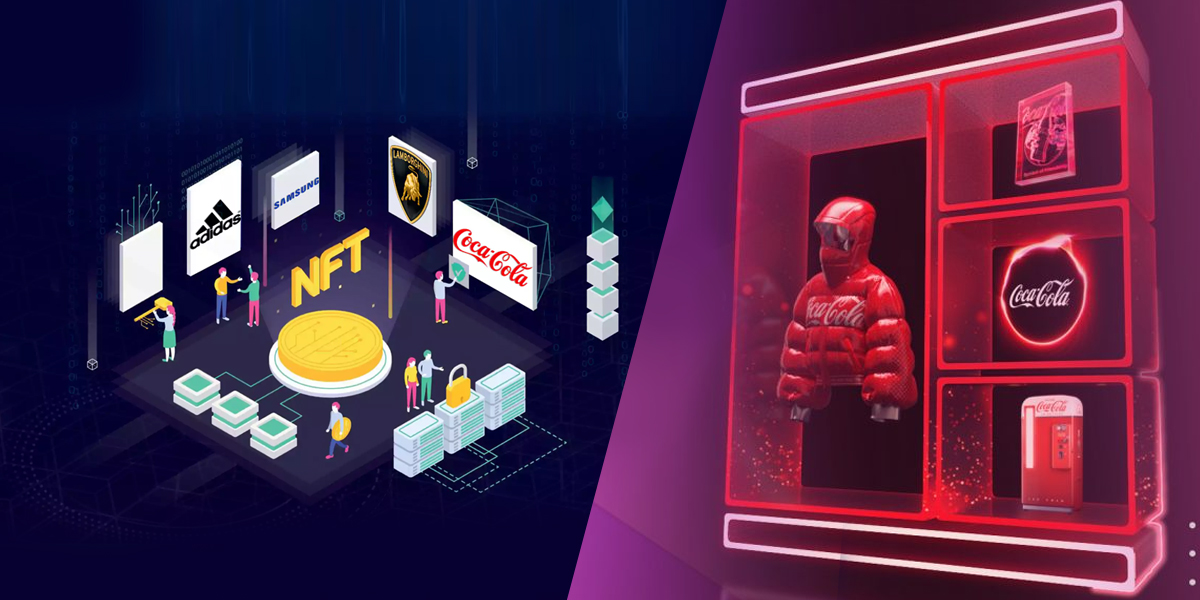The ascent of Non-Fungible Tokens (NFTs) in the digital asset sphere has been nothing short of meteoric. Offering unique opportunities for creators and collectors alike, NFTs stand at the forefront of a digital revolution in art and ownership. This guide explores the intricacies of designing and promoting NFTs, providing a roadmap from the drawing board to the bustling digital marketplace.
The Rise of NFTs: Understanding the Digital Phenomenon
The concept of NFTs brings a new dimension to digital ownership. At their core, NFTs are unique digital assets, each distinguished by its non-fungible characteristic, meaning it cannot be replaced or replicated. This uniqueness is authenticated through blockchain technology, which ensures security and transparency in every transaction. By providing a means to claim ownership of digital works, from art and music to virtual real estate, NFTs have opened a new chapter in the digital age, redefining the value and exchange of creative work.
For artists and creators, NFTs offer a groundbreaking platform to monetize digital creations. Unlike traditional art markets, where physical proximity and access to galleries can limit exposure, NFT platforms provide a global stage. This democratization of art and digital content has allowed creators from all walks of life to reach audiences previously unimaginable. Moreover, the ability of NFTs to ensure continuous royalties for creators with each subsequent sale introduces a sustainable model for artists to benefit from their work long-term.
The impact of NFTs extends beyond individual creators to the broader economy. By leveraging blockchain technology, NFTs provide a secure and transparent means of transaction, fostering trust in the digital marketplace. This aspect is crucial in an era where digital interactions are increasingly becoming the norm. Moreover, as NFTs continue to gain popularity, they are not only altering the landscape of digital art and ownership but also paving the way for new forms of digital interaction and commerce, reshaping industries and opening up new economic frontiers.
Crafting Your NFT: Design Principles and Creativity
Designing an NFT is an art that requires a fusion of creativity and an understanding of the digital medium. The process begins with conceptualization, where the creator must envision something that resonates with their audience, be it a piece of digital art, a music clip, or a virtual experience. It’s crucial to think beyond the aesthetic value, considering how the NFT can evoke emotion or offer a unique experience to the buyer. This creative phase demands not only artistic skills but also an awareness of the digital landscape and the tastes of the NFT community.
In the realm of NFT design, originality is paramount. With the market bustling with diverse creations, standing out requires a unique artistic voice and innovative use of technology. This might involve experimenting with different digital mediums, incorporating interactive elements, or exploring new narratives. It’s about creating something that not only captivates visually but also offers a unique value proposition to potential buyers. The key lies in striking a balance between artistic expression and market appeal.
An aspect often overlooked in NFT creation is the story behind the artwork. In a market teeming with options, the narrative accompanying an NFT can be a significant differentiator. This story could be about the inspiration behind the piece, the creative journey, or the message it aims to convey. It’s this story that can create a deeper connection with potential buyers, transforming the NFT from a mere digital asset to a meaningful piece of art that resonates on a personal level. A compelling narrative not only adds depth to the artwork but also fosters a stronger community around the creator’s work.
Partnering with Digital Services: Enhancing Your NFT Journey
For creators seeking expertise in the intricate world of NFTs, tapping into specialized services can be transformative. Utilizing an on-demand approach to creative collaboration allows for the blending of high-level design skills with the efficiency of advanced, technology-enabled processes. In this digital age, such professional services significantly enhance the quality and marketability of NFTs. By accessing top-notch creative insights and technical know-how, creators can ensure their digital assets stand out in a competitive marketplace. This approach is particularly beneficial for those who are exceptional in their artistic vision but may require additional professional support in navigating the technical and promotional aspects of the NFT.
Selecting the Right Platform: A Strategic Decision
The choice of platform for minting and selling NFTs is a critical decision that can significantly impact the success of the digital asset. Various blockchain platforms offer different features, from Ethereum’s widespread popularity and developer support to Binance Smart Chain’s lower transaction costs. Each platform comes with its own set of advantages and constraints, including differences in environmental impact, transaction fees, and audience reach. Creators must weigh these factors carefully, considering both their immediate needs and long-term goals.
When choosing a platform, it’s important to consider the specific requirements of the NFT. For example, some platforms are better suited for high-value, one-of-a-kind pieces, while others cater to more affordable, mass-produced items. Additionally, the choice of platform can influence the perception of the NFT in the market. A platform known for high-quality, curated content might attract a different set of buyers than one with a more open, diverse range of offerings. It’s also essential to stay abreast of evolving trends and technologies in the blockchain space, as the rapid development of new platforms and features can open up fresh opportunities for creators.
The technical aspects of minting an NFT also play a crucial role in the selection process. Different platforms have varying levels of complexity in terms of the minting process, with some offering more user-friendly interfaces than others. For creators who are not technically inclined, ease of use can be a deciding factor. Additionally, considerations such as the ability to embed royalties into the NFT, ensuring creators receive a percentage of sales each time the NFT changes hands, can be a crucial factor in platform selection. Ultimately, the right platform aligns with the creator’s artistic vision, technical proficiency, and market strategy, providing a foundation for the successful launch and sale of the NFT.
Marketing Your NFT: Building a Brand and Community
Once the NFT is created, effective marketing becomes essential in capturing the attention of potential buyers. The first step is building a strong personal brand. This involves not just showcasing the NFT but also sharing the creator’s journey, philosophy, and artistic vision. By creating a compelling narrative around their work, creators can attract an audience that resonates with their style and values. Leveraging social media platforms, from Instagram to Twitter, allows creators to reach a wide audience, engage with potential buyers, and build anticipation for their NFT releases.
Community building is another critical aspect of NFT marketing. Engaging with followers, responding to comments, and participating in relevant online groups and forums helps establish a loyal fan base. These communities can provide valuable feedback, foster word-of-mouth promotion, and even inspire new creations. Additionally, collaborations with other artists or involvement in virtual galleries and events can expand the creator’s reach and introduce their work to new audiences. It’s about creating a vibrant ecosystem around the NFT, where each interaction adds value and builds momentum.
A successful marketing strategy also involves understanding the nuances of the NFT market. This includes keeping abreast of trends, knowing what types of NFTs are gaining traction, and tailoring the marketing approach accordingly. For instance, limited-edition drops or exclusive access to certain content can create a sense of urgency and exclusivity, driving interest and sales. Additionally, creators should leverage analytics tools to track the performance of their marketing efforts, adjusting strategies based on what resonates with their audience. It’s a dynamic process, where flexibility and responsiveness to market feedback are key to success.
Navigating Legal Terrain: Intellectual Property and Rights
In the realm of NFTs, legal considerations are paramount. Understanding and respecting intellectual property rights is crucial to maintaining the integrity of the NFT market. This involves ensuring that the content being tokenized is either original or the creator has the necessary permissions to use it. Creators must also be aware of the legal implications of their work, particularly in relation to copyright laws, which can vary significantly from one jurisdiction to another.
Transparency is another key legal consideration. Creators should provide clear information about what the buyer is actually receiving – whether it’s the digital file itself, a license to use the content, or something else. Misunderstandings about what constitutes ownership of an NFT can lead to disputes and diminish trust in the creator and the broader market. It’s therefore essential to communicate clearly and transparently with potential buyers, ensuring all parties have a mutual understanding of the terms of the transaction.
Another important aspect is the drafting of smart contracts. These contracts, which are embedded in the NFT, dictate the terms of use and any royalties or rights that the creator retains. Getting these details right is crucial, as they govern the ongoing relationship between the creator, the artwork, and the buyer. Creators might consider seeking legal advice to ensure their contracts are comprehensive and enforceable. While navigating these legal intricacies can be daunting, it is a necessary step in ensuring that the NFT is not only artistically and commercially successful but also legally sound.
Pricing and Selling Your NFT: Strategies for Success
The final step in the NFT journey is pricing and selling the digital asset. This stage requires careful consideration of various factors to determine an appropriate price. Creators should consider the uniqueness and artistic merit of the NFT, as well as the cost of production, including any fees associated with minting and selling on the chosen platform. It’s also important to research the market, looking at similar NFTs to gauge how they are priced and how they have performed.
Selling an NFT involves more than just listing it on a marketplace. Creators should actively promote their work, using social media, email newsletters, and other channels to drive interest. Engaging with potential buyers, sharing the story behind the NFT, and highlighting its unique qualities can help attract attention and encourage sales. It’s also important to be patient and flexible, as the NFT market can be volatile, and it may take time to find the right buyer at the right price.
Finally, the journey of creating and promoting an NFT is a multifaceted endeavor that blends artistry, technology, and strategic thinking. From the initial concept to the final sale, each step requires careful consideration and a deep understanding of the digital landscape. By following the guidelines outlined in this guide, creators can navigate the world of NFTs with confidence and maximize their chances of success in this exciting and evolving market.







Leave a Reply